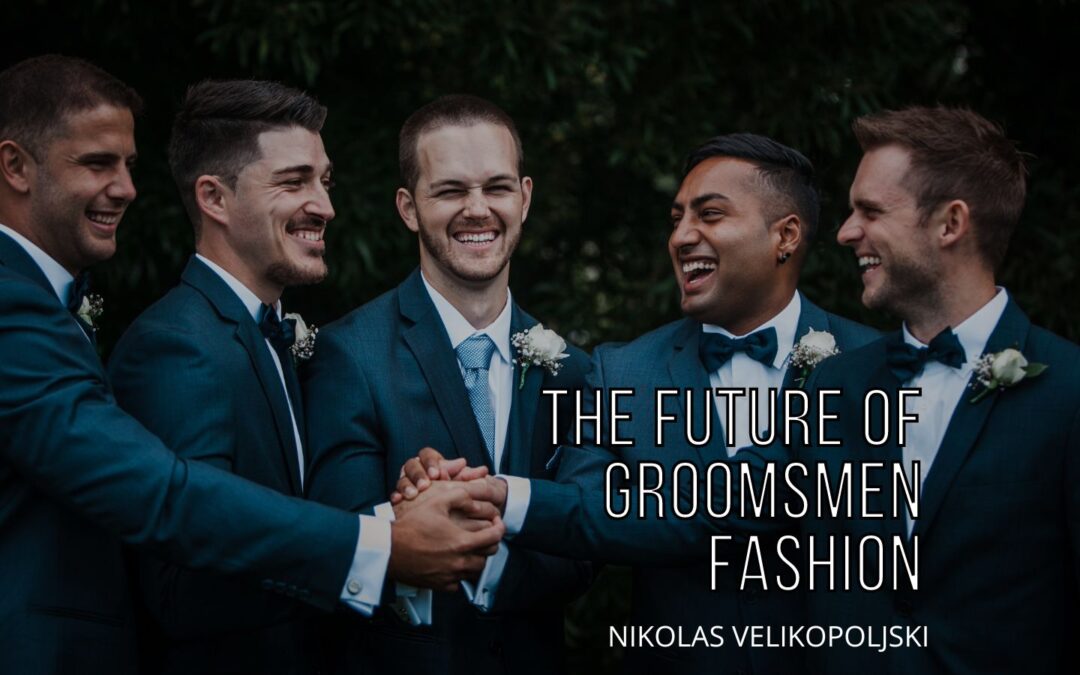The landscape of groomsmen fashion is poised for an exhilarating evolution, reflecting broader social changes and technological advancements. Traditionally, male wedding attire has been a bastion of classic styles, with minimal deviation from established norms. This, however, is set to change dramatically. The future is not just about altering aesthetics; it’s about embracing inclusivity, sustainability, and personalization. This transformation encompasses everything from materials and designs to the very philosophy that underpins what it means to dress for such a significant occasion.
For decades, groomsmen’s attire has been characterized by a conservative approach, favoring timeless over trendy. The quintessential black tuxedo, a symbol of elegance and uniformity, has been the go-to choice. This uniformity served a purpose – to create visual cohesion at wedding parties and to keep the focus on the couple. However, this approach often overshadowed individual personalities and preferences. In recent years, there has been a gradual shift towards more personalized and varied styles, reflecting broader societal changes. The increasing diversity in wedding formats – from traditional church ceremonies to destination weddings – has also influenced attire. This shift is a harbinger of more significant changes as the approach to weddings becomes more inclusive and expressive. The evolution is part of a larger trend, where there is an increasing emphasis on personal expression, sustainability, and the use of technology in design and manufacturing.
Technological Innovations in Fabrics
A key driver in the evolution of wedding fashion is technological innovation in fabrics. Future attire will likely feature materials that are not only aesthetically pleasing but also functional and sustainable. Fabrics embedded with technology that can change color, manage temperature, and even display digital patterns will allow for a level of customization previously unimaginable. Imagine a wedding party where each outfit subtly shifts in hue to match the changing lighting of the venue. Beyond aesthetics, functionality will play a significant role. Fabrics that resist wrinkles repel stains, and are more durable will be in demand, ensuring they look impeccable throughout the event. Sustainability will also be a critical factor.
The Rise of Personalized Fashion
Customization is becoming increasingly important in all areas of apparel, and attire is no exception. The future will depart from the one-style-fits-all approach, embracing individuality and uniqueness. Personalization can manifest in various forms – from bespoke tailoring that ensures each outfit fits perfectly to the choice of fabric, color, and pattern that reflects each individual’s personality. Customization can also extend to accessories, allowing each person to add a personal touch to their outfit, be it through unique cufflinks, ties, or even socks. Technology will play a pivotal role here, with advancements in 3D printing and AI-driven design making bespoke wear more accessible and affordable. This shift towards personalization is not just about aesthetics; it’s about comfort and expression. It acknowledges they are not just part of a wedding backdrop but individuals with their own styles and preferences. In a future where personalization is paramount, groomsmen’s attire will become a reflection of each individual’s identity, making the wedding experience more inclusive and personal.
Impact of Cultural Shifts on Wedding Attire
As societal norms and values evolve, so do perceptions and expectations around wedding attire. One of the most notable trends is the move towards inclusivity and diversity. This is reflected in more gender-neutral and culturally diverse wedding attire options. Male wedding attire is becoming less about adhering to strict Western dress codes and more about incorporating a variety of cultural influences, allowing for a richer expression of heritage and identity. Another cultural shift is the move away from formal attire to more casual and relaxed styles, mirroring changes in the workplace and societal dress codes. This trend might lean toward less formal, yet still elegant, attire like tailored blazers with dress pants or even thematic attire that resonates with the wedding’s overall theme or location.

